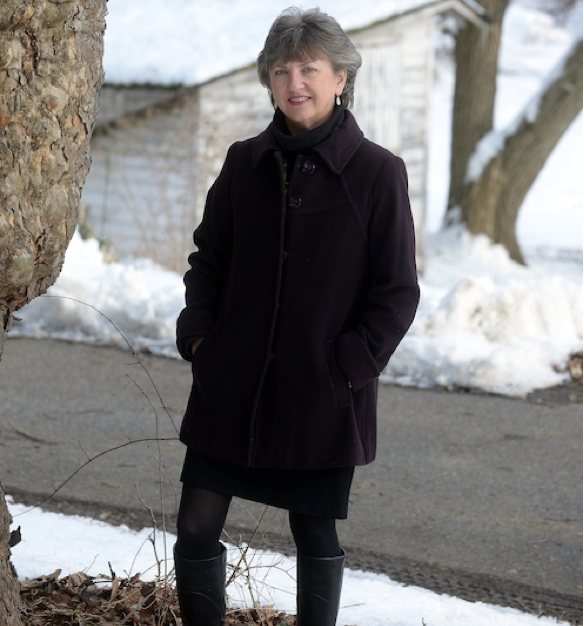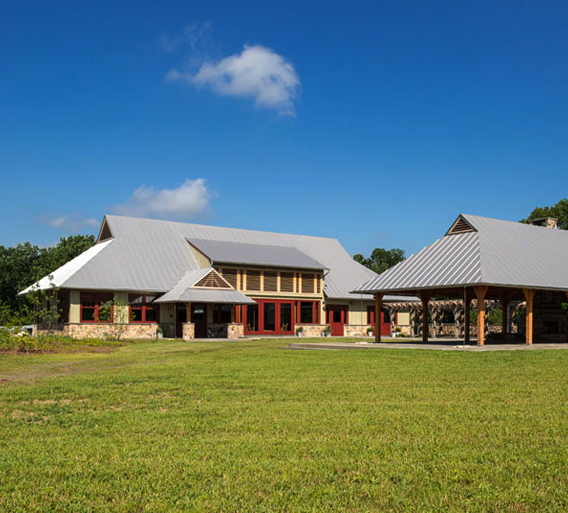By Vidja Rajan, Columnist, The Times
 ChesLen Preserve, Coatesville – A Shady Trail for Hot Summer Days
ChesLen Preserve, Coatesville – A Shady Trail for Hot Summer Days
Round trip distance: About 3 miles round trip in the shade, can be extended to around 5 miles.
Difficulty: Easy to moderate (one steep path going down)
Caution: Closed for hunting on occasion during deer season. Heed posted signs.
Website: http://www.natlands.org/preserves-to-visit/list-of-preserves/cheslen-preserve/
Trail Map: http://www.natlands.org/wp-content/uploads/downloads/2011/06/CheslenMap.pdf (yellow loop)
Membership Information: https://getinvolved.natlands.org/join-or-renew
It’s hot out there. It’s not a small matter to walk out in the open with the sun beating down on such days, so today I am going to walk you through a lovely shady route in ChesLen. This Natural Lands Trust preserve in Newlin Township boasts many miles of trails through over 1200 acres of woodland and fields. The previous installment on hiking trails in ChesLen (https://www.unionvilletimes.com/?p=9758) describes this lovely preserve and an exposed ramble across the two sections of ChesLen flanking Cannery Road, a walk well worth exploring on a pleasant day. This hike will keep you mostly under the cover of trees, but still wind through some interesting sights and sounds. This post does not have an accompanying Google-map, but clicking on the hyperlinks in the text will take you to photos online. The Trail map from ChesLen shows part of this trail as the yellow loop (notice that this hike departs from the trail map on the return trip. Please become a member of the Natural Lands Trust to support their stewardship of ChesLen. Please follow all rules, and avoid using this trail during the hunting season.
This hike starts at the small gravel parking lot near the Spring House on Cannery Road to the South of the main parking lot at ChesLen. Note, first, the magnificent American sycamore to the left as you head up the path. Look up and you can see the characteristic pale mottled surface as a result of the exfoliation of patches of the bark. Walk straight ahead at the fork and after a short steep bit, the path eases on to a large open meadow (0.05 miles), usually bursting with wildflowers (see photos – this meadow was recently mowed). Bear left and loop around the field and through a small tunnel formed of hedges and trees growing close to the path and overhead (0.15). Bear left again as the path opens onto another large meadow. The path now meets up with another and turns left into the woods through a second short tunnel (0.16).
The path then descends gently and forks (0.22 miles). Take either of the forks – they both dead-end on the same trail (0.24 miles). Turn left and follow the main trail as it curves gently. This is a great spot for birdsong, and a small plaque ahead (0.25 miles) describes these woods (Penn’s Woods) and one of the birds you are likely to hear here – the Scarlet Tanager. Take a look around you at the trees on either side – they’re dense and they appear fairly young. Stay on the path again as it bifurcates (0.31 miles), this time taking the path straight ahead. At the junction of the forks stands a peculiarly distinctive tree showing girdling scars from the vine that must once have twisted around its trunk. The vine has died and disappeared, but the marks it left on the tree remain. You will see this tree once more when you return along the path to the left. The trees on either side here and further ahead are festooned with vines – mostly grape with some bittersweet. Stay straight ahead on this path at the next fork as well (0.37 miles). This right hand path leads down to a shallow stream crossing, along the flank of a field and crosses another, deeper, stream (tributary to the Brandywine River on the North side of the park), before joining this path later in the hike at 0.82 miles.
The path dips steadily down to the stream crossing. Lots of invasive plants – wineberries, autumn olive, multiflora rose, Japanese stilt grass, and bittersweet vine thrive along the path. Along the way at 0.43 miles, observe the maple tree with woody galls – it’s quite a spectacular specimen – almost like someone with hives! As you pass along the path down to the river, observe how the trees thin out. For a while, there are only ferns, and then rhododendrons with their twisted trunks on the slopes. Fallen, decaying trees lie everywhere, giving a sense of the passage of time in the woods. The path slopes more steeply downward, leading to the stream. Cross the stream on the stones – beware your footing when the water is high. If you prefer a short walk, you can now turn right and follow the hiking directions below at 2.19 miles. Otherwise, turn right on the main path and follow the broad trail past where it meets another stream crossing (the one described earlier at 0.37 miles). This path is shaded by large black walnut, maple, and oak, and fringed by wineberries, blackberry brambles, ferns, wildflowers and autumn olive bushes.
The path thins ahead and the trees are replaced by hedges on either side full of birdsong in the early morning and late afternoon (0.74 miles). The path emerges on a field (0.8 miles) and passes into woods again shortly after on the right as you walk up the hill (0.9 miles). (An alternate path shown in yellow on the ChesLen trails map – see top of page for link – is an option, but will not be followed here as it is over open fields in direct sun.) Walk along the path into the woods past more blackberry and wineberry brambles. Here too, you can hear birdsong and the occasional scuffling in the dense growth on either side. There are stands of multiflora rose and autumn olive, thriving native grasses and wildflowers. Walk past an overgrown path on the left, past a tumbledown old fence, and then come to a “five points” junction (1.21 miles) with two paths leading up the hill (to meet the yellow trail on the ChesLen map) and then down to the stream (and across, skirting private property, to the railway line), and one straight ahead through a bog also to the railway line. If you want to stay cool, you will be well advised to leave all those paths in mid-summer.
Turn around and retrace your path. Stay on the main trail, and notice the trees down the bank looming over you – many well over 100 feet tall. Among the trees you will see here are the hardwoods: yellow poplars, black walnut, American sycamore, maple, and oak. If you pass silently, you will hear birds calling, the breeze whispering in the foliage and the rustle of animals in the undergrowth – the place is a lot more alive than it appears at first glance. Pass over the metal cover on the path and past the first stream crossing (2.19 miles), past a path leading off to the right (which leads back around a sunny field to the main Cannery Road parking lot across from the maintenance buildings), and to another stream crossing on your left at 2.3 miles. Along the way down to the stream notice evergreen Christmas fern and other assorted ferns.
The second stream crossing is down a short slope to your left (2.3 miles). Cross the rocky stream bed and pass up the slope. This area is quite muddy, churned up and slippery, so be careful. As you walk up the slope, notice the witch-hazel trees on either side. The path curves gently around and up to the distinctive tree with the vine growth scars (2.54 miles). At this point, take the right hand trail and retrace your path past the information board (2.59 miles). About 10 yards beyond is the path on the right that leads back through the trees to the parking lot. (The path leading ahead goes sharply down the hill, crosses a stream, goes uphill through woods and leads onto an open, cultivated, field with other paths leading off here and there.)
As you pass through the tunnel of hedges back out into the open, take the path straight ahead this time, instead of the one you came in on. This path leads down the field towards Cannery Road, passing the ruins of a house on the right (2.74 miles). The path then turns to the right, forks into three, and the main path leads back to the Spring House (2.84 miles). Take the time to explore the paths leading off the main one here; the one to the left parallels Cannery Road along a shady path and wanders into trees, probably to meet other trails snaking around in these lovely woods.
Naturalist notes: Non-native species vs. invasive species
In this and in previous posts, I have referred to a few invasive species such as Russian olive and multiflora rose in various locations. In fact, Chester County reports 381 invasive species. Recognize them at http://www.eddmaps.org/species/.
However, the perception that all non-native (exotic) species are also invasive species is an oversimplification. Invasive species in an ecosystem are a subset of non-native species that have got out of control and threaten biodiversity through competitive displacement of indigenous species that share the same ecological niche. In their native habitats these species evolved in an environment where other species checked their spread. Removed from such controls these organisms proliferate rapidly, challenging the biological diversity of their new environment and potentially causing economic harm. Some non-native species are introduced inadvertently (ex. zebra mussels in ballast discharge in the Great Lakes; stink bugs possibly as stowaways in packing crates); others are imported for a specific purpose (ex. European honeybees; most food and ornamental plants).
While non-native species fill an important role especially in food and agriculture they tend to be less adapted to the environment, and require careful nurturing to thrive, while native species are adapted to the environment, are hardy, and also sustain indigenous wildlife. An example of how you can promote native species is by replacing non-native lawn turf which requires fertilizer treatment and watering with native meadows or buffalo grass, fescues and sedges. The Land Conservancy of Southern Chester County has a “Landscape Visionaries” program which gives advice on use of native plants to promote a backyard habitat that is also ecologically sound.








Please note the following correction in the fourth paragraph for those wanting to take the shorter walk:
If you prefer a short walk, you can now turn LEFT and follow the hiking directions below at 2.19 miles. Otherwise, turn right on the main path and follow the broad trail past where it meets another stream crossing (the one described earlier at 0.37 miles).
Thank you, Berta.
I love this detailed description of a walk on the trail with pictures…A great way to vicariously enjoy the beauty of the outdoors. Thank you.